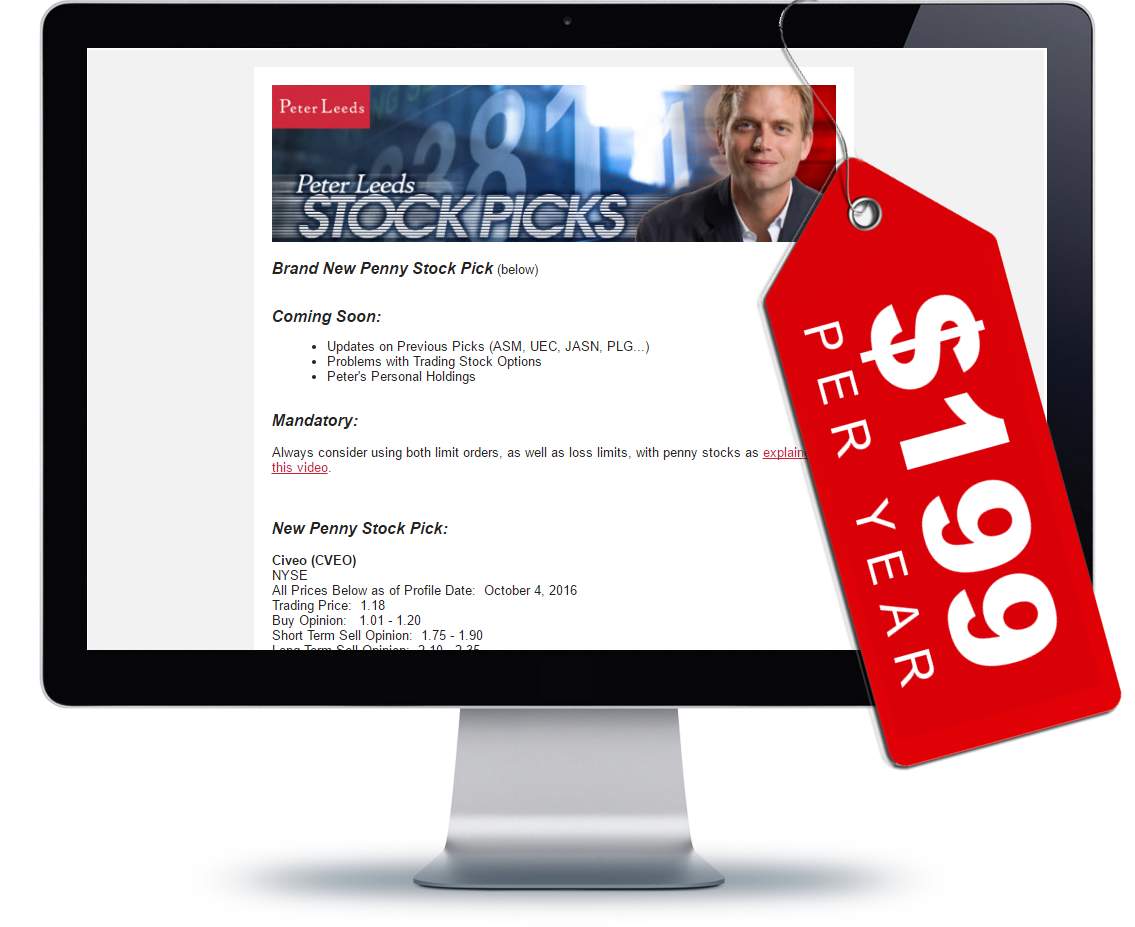Blog : Always Use Limit Orders with Penny Stocks
by Peter Leeds on January 26th, 2016





There are 2 main types of stock market trades when buying or selling shares. These are limit orders and market orders, and the difference will matter a great deal to penny stock investors.
You can see the Official Discount Broker Rankings here.
Market Orders:
Market orders are the equivalent of saying "buy that penny stock." Your discount broker then goes ahead and buys, just as you had instructed.
Sounds simple, but this is especially risky in thinly-traded penny stocks. With market orders, your discount broker just gets you the shares, no matter the price.
The very act of your $500 purchase can often push tiny penny stocks higher. For example, your market buy order may take out all the 25 cent shares, but still not be fully filled.
The remaining $230 then takes out all the shares being sold at 32 cents. Then the last $75 takes out the next best price of 37 cents.
While the shares had been selling for 25 a few minutes ago, you just bought some for $0.32 cents, and then more for $0.37. After your buying demand lets up (once your market order gets filled), the penny stock typically falls back towards it's former range of a few minutes earlier, which in this case is 25 cents.
Limit Orders:
Limit orders are the equivalent of saying, "buy that penny stock, at 27 cents or less." In this case, you will never pay more than 27 cents for any share.
The only downside is that with limit orders, you do not always get all the shares you want. Consider how this approach would work in the scenario we previously described:
- Your $500 would get you all the shares being sold at 25 cents.
- The next "ask" price (the lowest price at which the shares are being sold), would be $0.32. Since you have "limited" your purchase to 27 cents, you will not get any further shares, unless you increase your bid price, or the seller lowers their ask price.
In this scenario, your 27 cent offer would be the highest bid price, while 32 cents would be the lowest ask price. Unless and until something changes (like a new trader selling a bunch of shares, or another person coming along and offering to pay more), the bid/ask will remain $0.27 / $0.32.
Any purchases (even small ones) often end up driving the price of the underlying shares higher. There may not be many other traders looking to buy or sell at any given point, in which case any market order will push the shares up to unfortunate valuations for the buyer.
Never use market orders if you can help it, and especially not with thinly-traded low-priced penny stocks.
Penny Stocks for Dummies (Revised Edition) Update: Our publisher, John Wiley & Sons, has informed us that the 2nd edition of the International bestseller will be on the store shelves, and available wherever books are sold, in March.
Just Released! An hour ago, our newest penny stock pick was sent out to all subscribers. Don't keep missing out, especially for only 55 cents/day! This is a tiny $9 million company, with over $100,000 in revenue per employee, in an industry immune to inflation, depression, and recession.
You are reading this old blog entry because we still like to reference it. :-)
Get Our Best Low-Priced Investments
- don't have the time?
- can't do all the work required?
- want selections from the authority?
For only $199 per year, we give you our best high-quality, low-priced stock picks. Along with a full team, Peter Leeds is the widely recognized authority on small stocks. Start making money from penny stocks right away.


